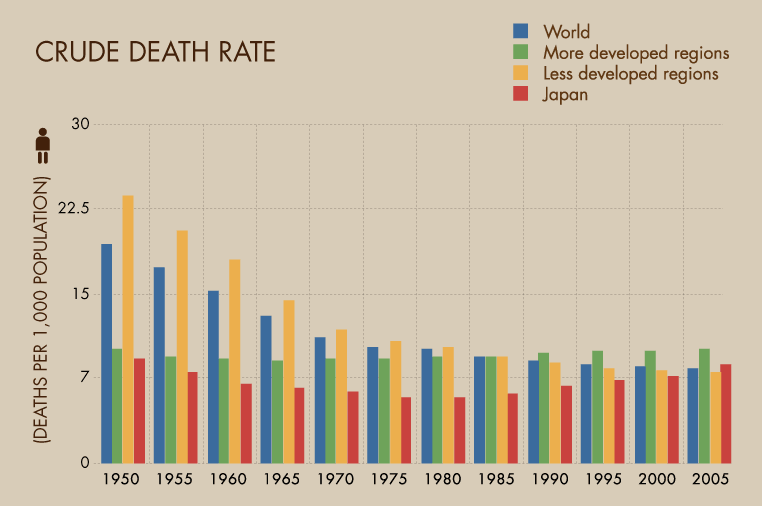Explore The Definition Of Crude Death Rate: A Comprehensive Guide
What is the crude death rate? It is a measure of mortality that reflects the overall health and well-being of a population.
The crude death rate is calculated by dividing the number of deaths in a population by the total population and multiplying the result by 1,000. The result is expressed as the number of deaths per 1,000 people.
The crude death rate is a useful indicator of the overall health of a population. It can be used to track changes in mortality over time and to compare the mortality rates of different populations.
The crude death rate is influenced by a number of factors, including age, sex, race, and socioeconomic status. For example, the crude death rate is typically higher in developing countries than in developed countries, and it is higher among the elderly than among the young.
The crude death rate is an important measure of mortality. It can be used to track changes in mortality over time and to compare the mortality rates of different populations.
Factors that affect the crude death rate include
- Age
- Sex
- Race
- Socioeconomic status
The crude death rate can be used to
- Track changes in mortality over time
- Compare the mortality rates of different populations
- Identify populations that are at high risk for death
FAQs about the crude death rate
Here are some frequently asked questions about the crude death rate:
Question 1: What is the crude death rate?
The crude death rate is a measure of mortality that reflects the overall health and well-being of a population. It is calculated by dividing the number of deaths in a population by the total population and multiplying the result by 1,000. The result is expressed as the number of deaths per 1,000 people.
Question 2: What factors affect the crude death rate?
The crude death rate is influenced by a number of factors, including age, sex, race, and socioeconomic status. For example, the crude death rate is typically higher in developing countries than in developed countries, and it is higher among the elderly than among the young.
Summary: The crude death rate is an important measure of mortality. It can be used to track changes in mortality over time and to compare the mortality rates of different populations.
Conclusion
The crude death rate is an important measure of mortality that can be used to track changes in mortality over time and to compare the mortality rates of different populations. It is influenced by a number of factors, including age, sex, race, and socioeconomic status.
The crude death rate is a valuable tool for public health officials and policymakers. It can be used to identify populations that are at high risk for death and to develop policies and programs to improve the health of the population.
Ultimate Guide: Publish Your Website Effortlessly With Visual Studio Code
The Definitive Guide To Being A Serious Professional
Understanding Sumer's Political Foundation: The Basic Political Unit Unveiled

